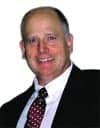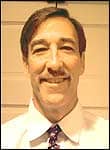Creating accurate and convenient screening audiometry solutions was just the beginning for the innovative team at Otovation.

Hearing Products Report (HPR) Please tell us a bit about the origins of OTOVATION. Who launched the company? When? Where are the company’s main headquarters?
Dave Davis OTOVATION was formed in August 2003, but its roots go back to early 2002 with the origin of the Pocket Hearo® development within Sensory Arts & Science. I’m the founder of both companies, and Brett Strouss, our vice president of operations, has been with OTOVATION since February of 2003. We’ve just relocated to new and larger facilities in King of Prussia, Pa, a suburb of Philadelphia.
HPR What is the primary mission statement of OTOVATION?
Davis We’re innovators by nature, and are focused on developing new and exciting products for the hearing care industry. Up until now, we’ve been purely working in screening audiometry, but we are developing some new products for the diagnostic end of the market.
Here’s our mission statement, which I think captures it:
“OTOVATION develops and offers the very best tools and solutions that provide accurate and convenient testing for hearing and auditory health.”
Generally speaking, we believe that hearing diagnostics need to be simpler and more portable and accessible to those who need them. This notion is what guides our efforts for developing new and unique products.
HPR OTOVATION’s products offer screening solutions for audiologists. Can you describe your current inventory of products and their special features?
Davis After seeing the market interest in our Pocket Hearo product, we have, of course, continued to enhance it to meet the needs of its audience. We have seen some significant uptake by audiologists who travel and want a truly portable solution for screening in the community. Plus, the Pocket Hearo has full data management, so you can test in the field, and then download and print your reports when back in the office. It’s a nice combination that makes sense to today’s busy audiologists.
Also, we noticed that there was still an audience who wanted a very low cost and basic screening tool, and so we introduced the ROTO® screener to meet this need. [The ROTO, priced at $399, is] a good way to perform basic screening, and yet offers the ability to do more than just screen at a fixed intensity level.
Most recently, we introduced the Amplitude A1 headset audiometer. The Amplitude is a complete audiometer contained within the headset, and connects easily to a PC by a USB connector. Once you plug it into the PC and load the software, you’re ready to begin testing. And you can move it from PC to PC, since all the calibration information is stored in the headset. The Amplitude has unique appeal, especially for those audiologists who are already carrying their laptop. We also plan to offer an air and bone conduction model of the Amplitude, and we’ve seen great interest in this product already.
HPR What would you consider your cornerstone product? How long has it been on the market?
Davis We’re probably known best for the Pocket Hearo. Since its introduction about 2 years ago, the Hearo has become a popular choice for traveling audiologists, physicians, and school testing. As we continue to enhance the product, we believe it will become even more attractive as an alternative to more traditional audiometers. After all, if you can have a fully capable screening audiometer in a handheld device, and it can also be your PDA and maybe even your cell phone, who wouldn’t want one?
HPR Does OTOVATION plan to unveil any new products in the next year?
Davis Yes, in addition to the air and bone conduction version of the Amplitude, we’re working on a very advanced product called the OTOSPHERE™ that we plan to introduce in 2006. I can’t really say much about it right now, but it’s unlike anything [currently on] the market, and we think it will redefine what’s possible in audiometric testing.
HPR In your opinion, have there been any significant changes in the audiology market that directly affect OTOVATION’s products—both positively and negatively?
Davis Well, I certainly think that the notion of a self-testing audiometry system is one that more people are warming up to—and with good reason. Bob Margolis, PhD, [a professor in the Department of Otolaryngology at the University of Minnesota, Minneapolis] is a “thought leader” and proponent of this, and we think he is absolutely right. So much so, in fact, that we’re working with him on some new things that we think will be well received by the audiology community, and also positively impact how testing is performed. Changing collective minds takes time, but a good idea that is well implemented and audiologist-friendly is still possible.
HPR What are your company’s primary marketing sources for attracting new customers within the audiology field?
Davis We’ve increased our advertising, and of course we depend on our dealers to also get the good word out. We’ll be delving into the physician and occupational health testing market soon, and using some advertising and innovative promotions there as well. Our products do seem to grab people’s attention, and many people who see our products call or e-mail us, since they are interested in learning more about them. A lot of them say they like our “out of the box” thinking and approach to testing solutions.
HPR OTOVATION maintains an international presence. What is the difference in dealing with the domestic and international markets?
Davis We’re just really starting to establish a presence in international markets. We have seen a lot of interest, but are careful to ensure that we align with the right partners. Obviously, business differs greatly by region and culture, so it is crucial to have the right partners who have both a broad and deep understanding of local issues and business tactics in order to be successful.
HPR As Baby Boomers age, their need for hearing instruments is naturally increasing. Do you find use of your products increasing among this demographic?
Davis Not really, since our primary audience is the clinician, not the consumer. However, we are planning a new initiative that we think will help establish easy paths to testing for consumers, and that we think will be very well received. This is directly in line with our philosophy of creating easier ways for people to access the testing they need, and creates a gateway for them to seek further care.
HPR What are the future trends you see in your niche of hearing health care? How will OTOVATION respond to them?
Davis I believe that the market will trend toward the self-testing model and that much more accessible ways of delivering an accurate test will open the flood gates to sales of hearing aids and other assistive devices. I consider it our job to provide the innovation in thinking and deliver tools and methods that will open this opportunity for many more people than ever before. We’re thinking for the long term, and we’re serious about and dedicated to this effort.
HPR How do you see the company evolving over the next year? Any projections for the next decade?
Davis One of my favorite quotes is “The best way to predict the future is to create it.” That said, I believe that we have the vision, talent, and desire to become a leading hearing diagnostics company, and that we’ll branch out into some additional neuro-diagnostic areas as well. Looking years out, I would like to see us build on the positive reputation we’ve achieved thus far, and also continue to be recognized for innovation, quality, and being good listeners and easy to work with. This is not a particularly large industry, and we need to not only lead, but also play well with others. And finally, we will always try to be generous and socially responsible, offering our time and the tools we make for good causes. After all, portable testing is the best and in many cases the only method to help people in certain areas and situations.
—R. Schuyler Silverman





